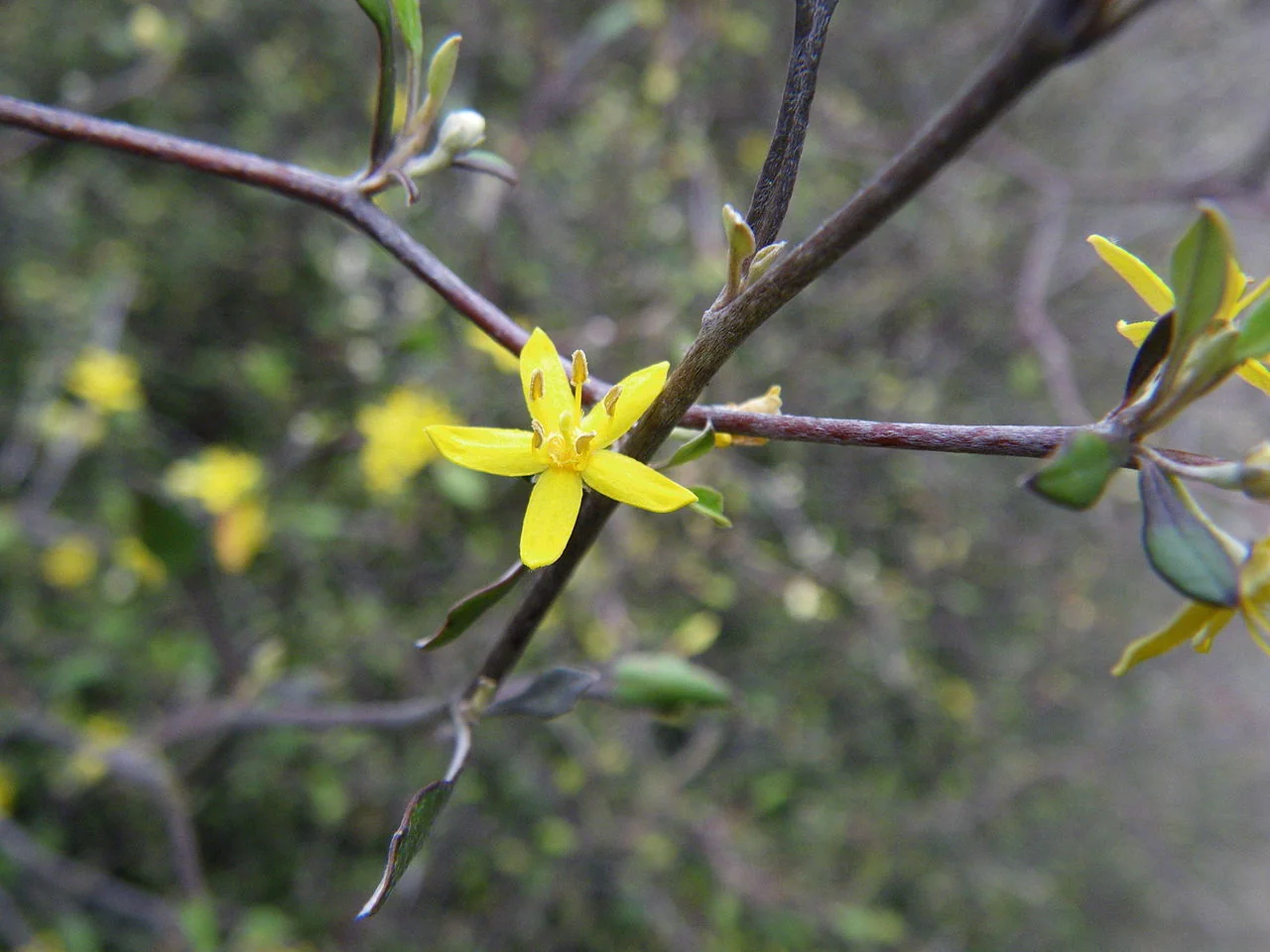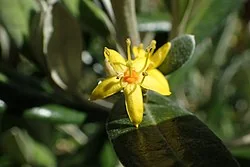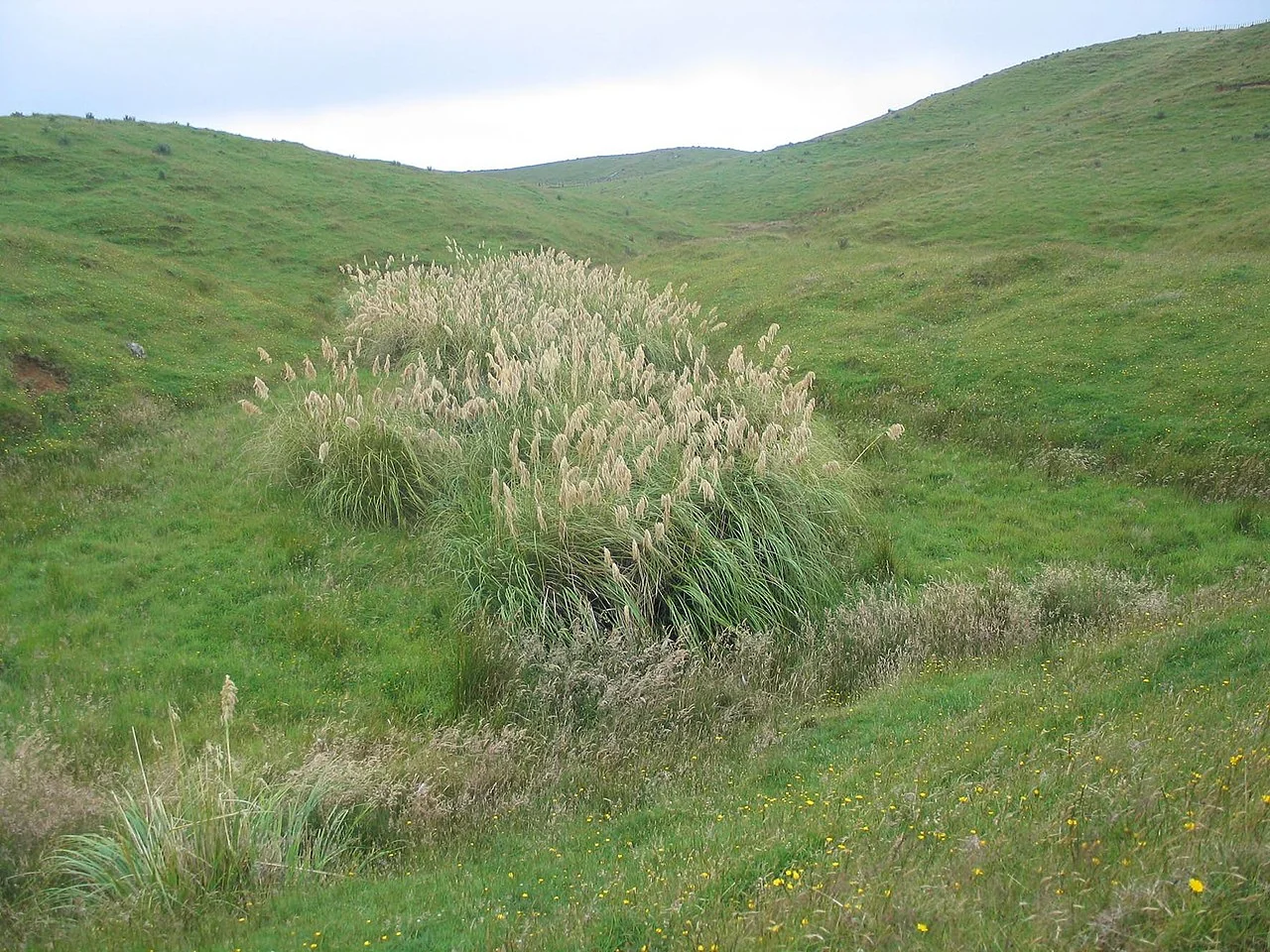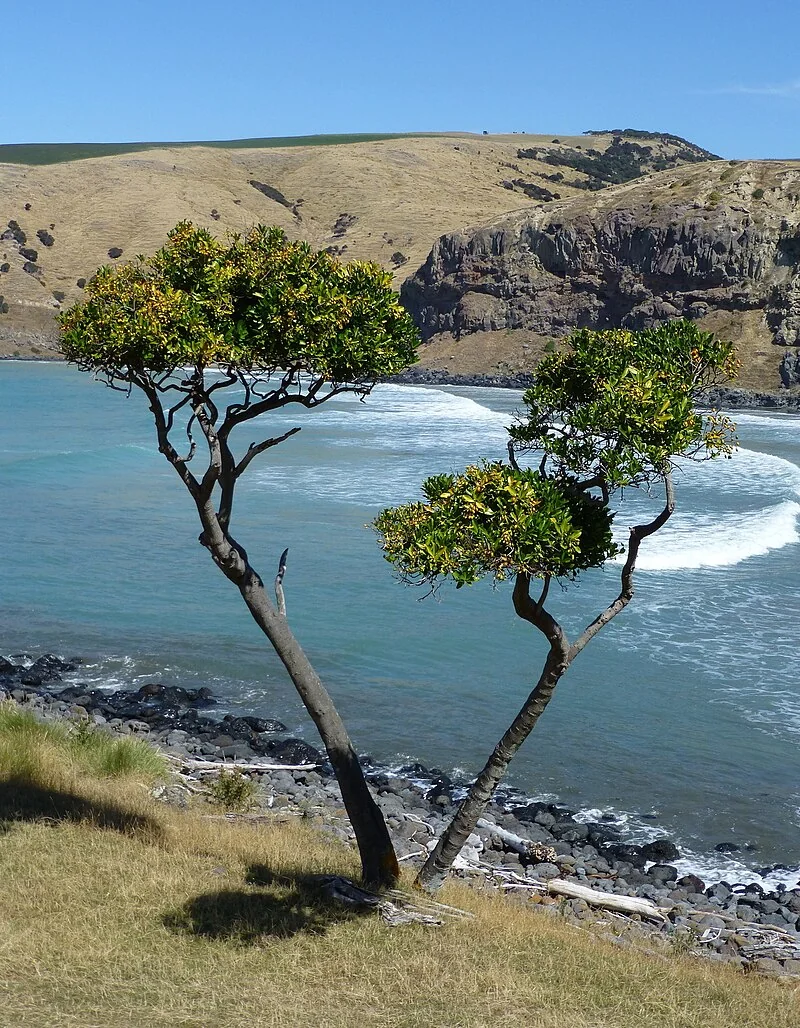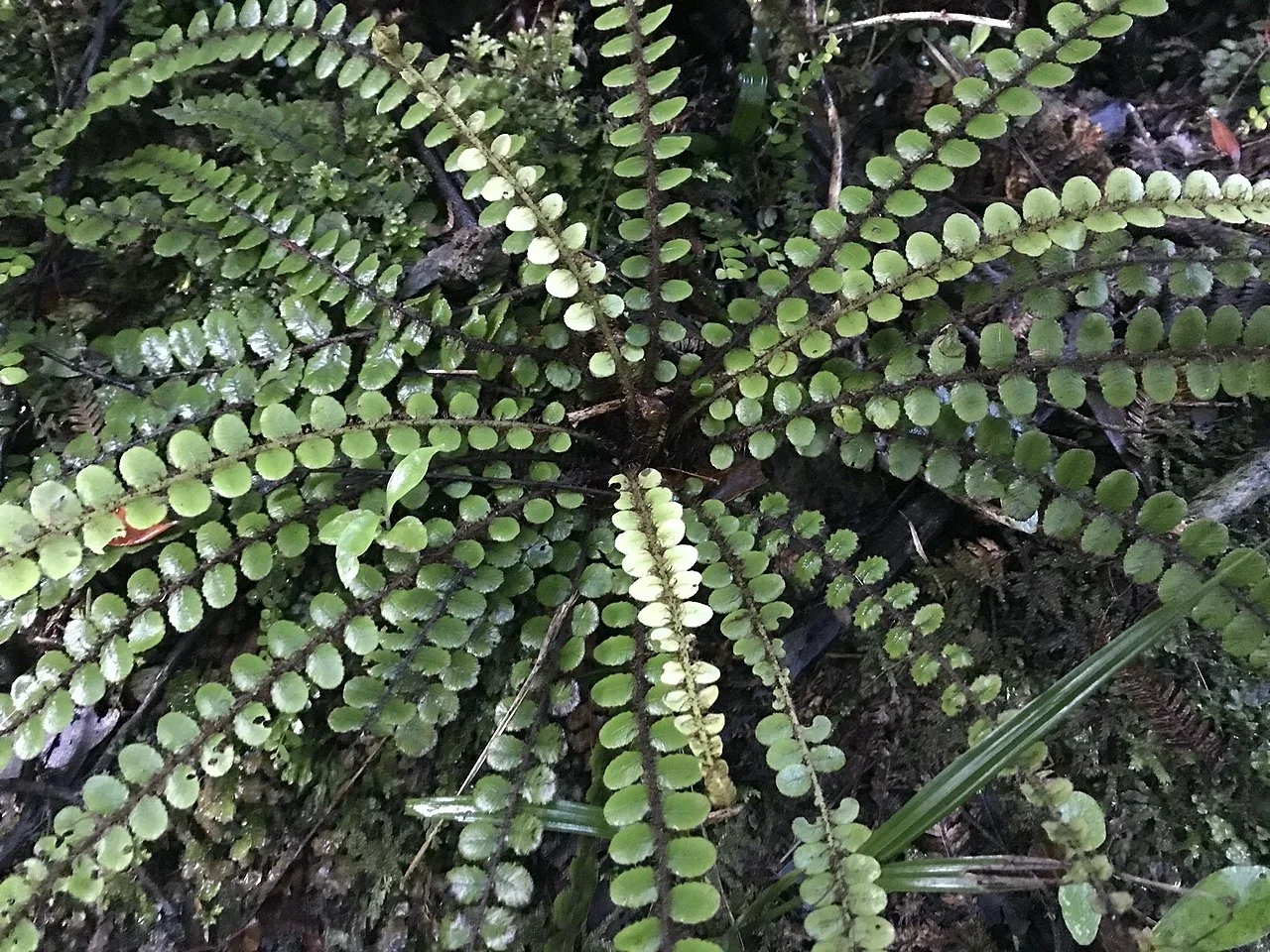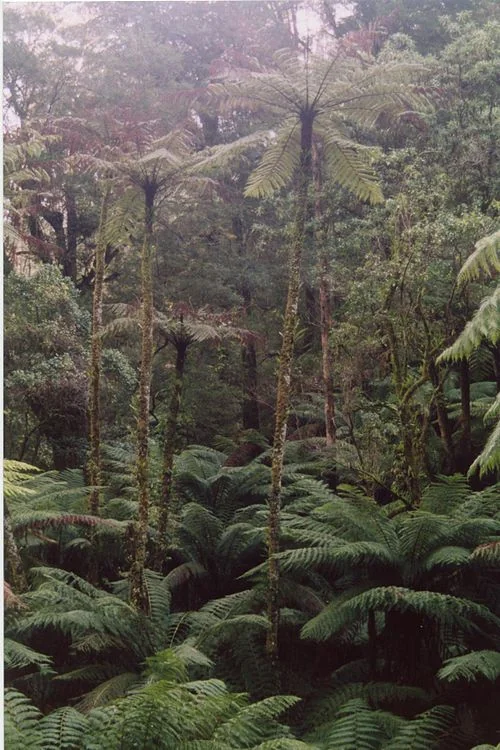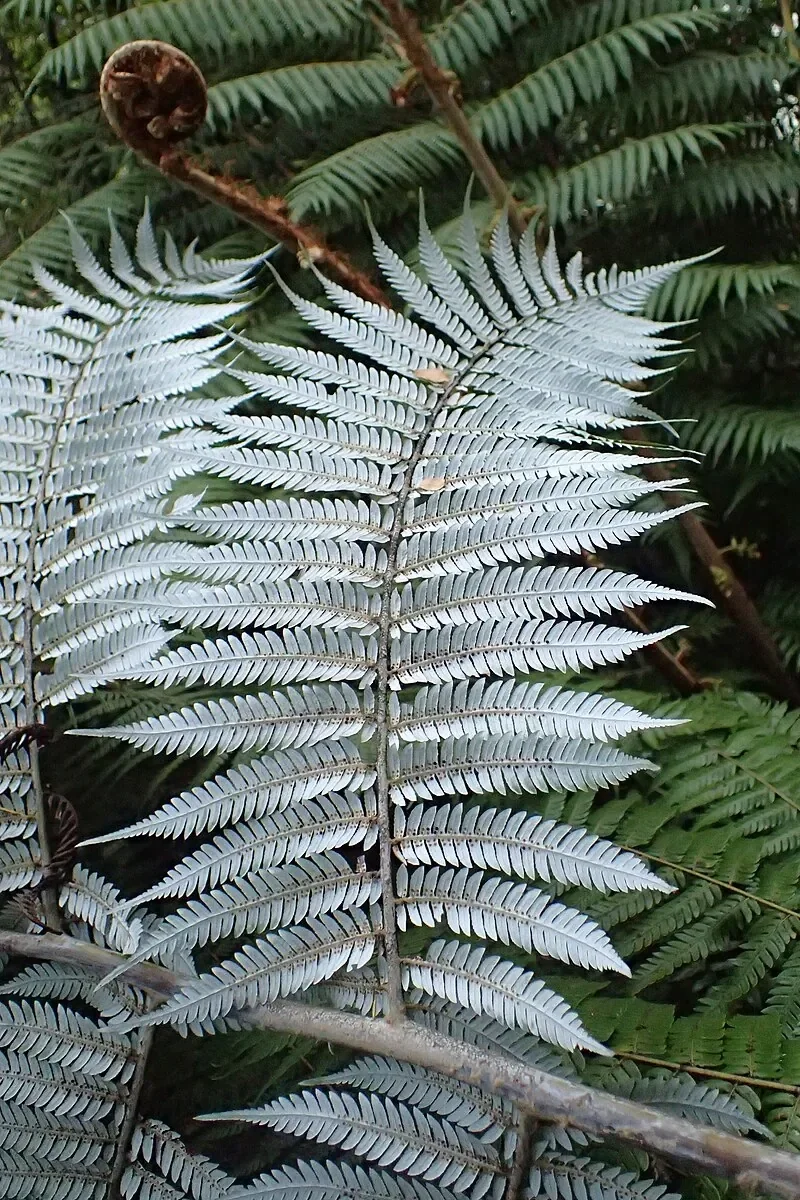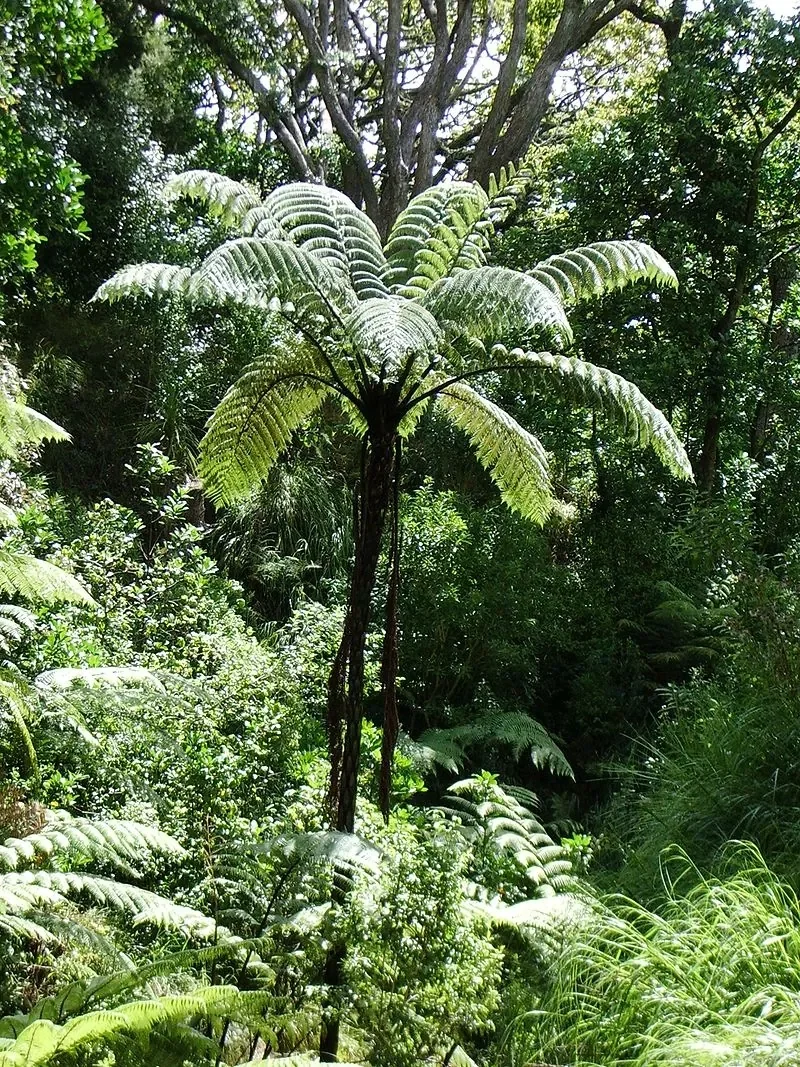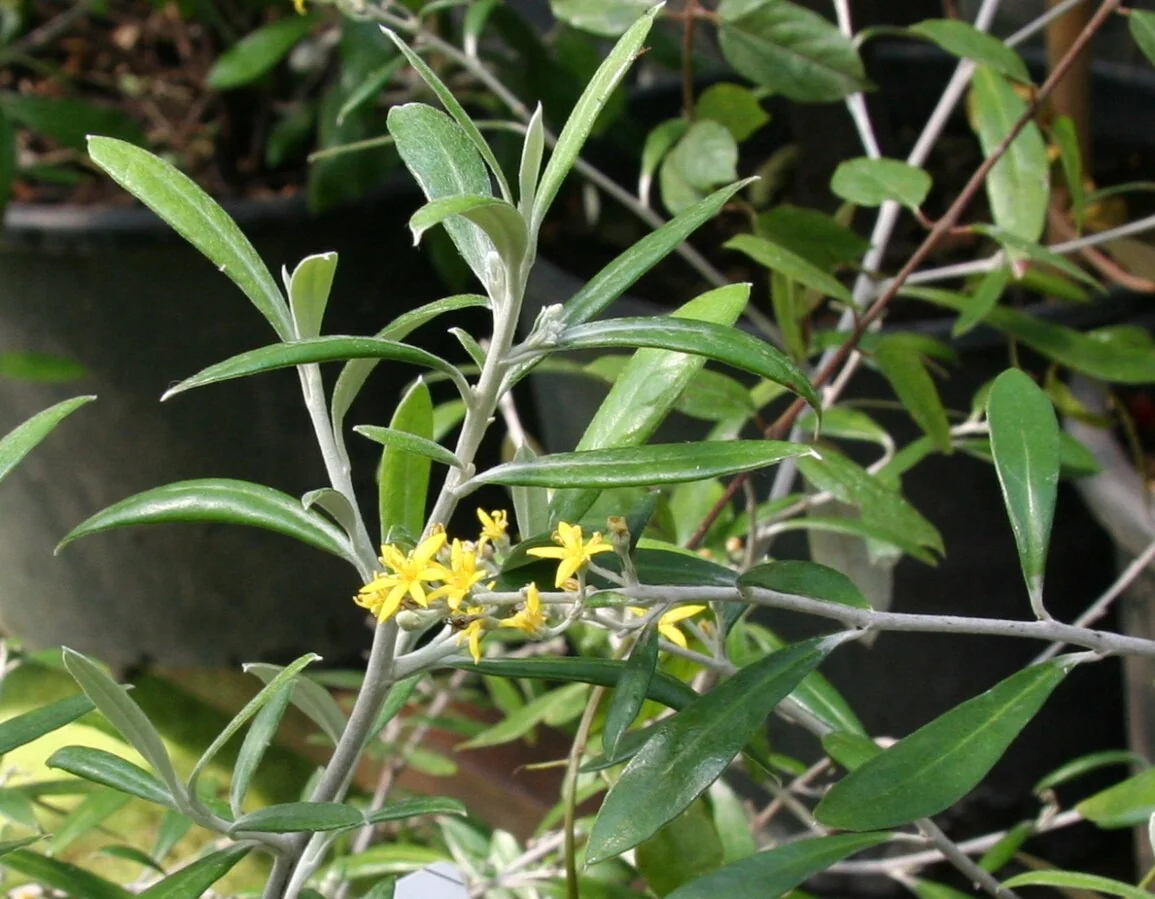
Korokio
Corokia buddleioides
A wiry, divaricating shrub endemic to the northern North Island, often on coastal headlands and scrub. Small yellow starry flowers are followed by orange-red berries that attract birds. Its tough constitution and neat habit suit hedging, shelter and coastal gardens among our native shrubs.

Plant Description
Botanical Features
Corokia buddleioides, commonly known as Korokio or Buddle's wire-netting bush, is a unique and hardy evergreen shrub or small tree native to New Zealand, specifically the North Island. It is characterized by its dense, upright, and often wiry, twiggy form, reaching 2-3 meters tall. Its leaves are soft, green, elongated, narrow, and lance-shaped, typically 5-15 cm long. They are glossy dark green on the upper surface and covered with a silvery-white felt or dense silvery hairs on the underside. Small, star-shaped, bright to pale yellow flowers appear in spring to early summer, followed by attractive red, dark red, or sometimes yellow berries in autumn. This plant is known for its tolerance to wind, dry conditions, and coastal exposure, and is frost hardy.
Quick Facts
Quick Facts Overview
| Scientific Name | Corokia buddleioides |
|---|---|
| Height | 2-4 m |
| Spread | 2-3 m |
| Light | Full sun to light shade |
| Soil | Well-drained; tolerates coastal sands |
| Water Needs | Low once established |
| Wind/Salt | Excellent tolerance |
| Frost Tolerance | Varies |
| Salt Tolerance | Varies |
| Growth Rate | Varies |
| Lifespan | Varies |
Climate Requirements
Climate Conditions
Korokio is well-adapted to New Zealand's temperate coastal and inland conditions, naturally occurring from North Cape to central North Island. This hardy shrub demonstrates exceptional tolerance to challenging environmental conditions, making it suitable for a wide range of cultivation sites across New Zealand.
The species thrives in both coastal and inland positions, withstanding dry, cold, and windy conditions with remarkable resilience. Its excellent salt tolerance makes it particularly valuable for coastal plantings, while its adaptability to various soil types and exposure levels ensures success in most New Zealand gardens.
| City | Climate Suitability |
|---|---|
| Whangārei | Ideal |
| Auckland | Ideal |
| Hamilton | Ideal |
| Tauranga | Ideal |
| Rotorua | Ideal |
| Gisborne | Ideal |
| New Plymouth | Ideal |
| Napier | Ideal |
| Whanganui | Ideal |
| Palmerston North | Ideal |
| Wellington | Ideal |
| Nelson | Ideal |
| Christchurch | Ideal |
| Dunedin | Ideal |
| Invercargill | Ideal |
Natural Habitat
Typical Environments
Understanding Korokio's natural habitat provides valuable insights for successful cultivation and conservation efforts.
- Endemic to northern North Island, New Zealand
- Coastal headlands, cliffs, and exposed shorelines
- Scrubland and regenerating coastal forest margins
- Well-drained, often rocky or sandy soils
- Full sun to partial shade conditions
- Associates with p� hutukawa, taupata, and coastal flax
Plant Conservation
The Corokia buddleioides, also known as korokio, is currently classified as "Not Threatened" as of 2023. This conservation status applies to the species in New Zealand, where it is an endemic vascular plant. Previous assessments in 2012 and 2017 also listed it as "Not Threatened".
This much-branched shrub can grow up to 3 meters tall and is found in coastal to lowland forest and forest margins in the North Island of New Zealand. It is characterized by its narrow, glossy leaves with white undersides and produces bright yellow flowers followed by dark red to black drupes.
Growing Requirements
Soil
- Free-draining soils; avoid waterlogging
- Mulch to conserve moisture in summer
Light
- Full sun promotes dense growth and flowering
Water
- Water regularly during establishment
- Very drought-tolerant once established
Planting Guide
When to Plant
The optimal planting time for Korokio is during spring or early autumn when temperatures are moderate and rainfall is more reliable, allowing for good root establishment.
Site Selection
Choose a site that accommodates Korokio's preferences and mature size:
- Full sun to light shade for optimal growth and flowering
- Well-drained soil - avoid waterlogged areas
- Space to accommodate 2-4 m height and 2-3 m spread
- Consider coastal exposure - excellent salt and wind tolerance
- Allow for good air circulation around the plant
Planting Procedure
- Dig a hole twice as wide as the root ball and same depth
- Ensure good drainage - amend clay soils with compost and sand
- Position plant at same level as in container
- Backfill with improved soil, firming gently
- Water thoroughly to settle soil around roots
- Apply 5-7cm layer of organic mulch, keeping away from stem
- Water regularly during first year for establishment
Initial Care
Provide consistent moisture during establishment while avoiding overwatering. Once established, Korokio is extremely drought tolerant and requires minimal ongoing care.
Ecological Role
Ecosystem Roles
Korokio plays an important role in New Zealand's coastal and scrubland ecosystems, providing food and habitat for native wildlife.
- Berries provide crucial food source for native birds in autumn/winter
- Flowers attract native bees and beneficial insects
- Dense branching provides nesting sites for small birds
- Part of important coastal shrubland communities
- Helps stabilize coastal soils with extensive root system
- Contributes to biodiversity in native plant gardens
Uses and Significance
Garden Uses
- Ideal for coastal gardens and exposed situations
- Excellent for hedging and windbreaks
- Perfect for native plant gardens and wildlife habitat
- Suitable for dry gardens and xeriscaping
- Works well in containers and urban situations
- Good screening plant for privacy
Landscaping Applications
Design Ideas
Korokio's versatility and hardiness make it suitable for a wide range of landscaping applications.
- Coastal gardens: Excellent salt and wind tolerance
- Hedging: Dense growth suitable for formal or informal hedges
- Windbreaks: Provides shelter for more sensitive plants
- Native gardens: Authentic addition to indigenous plantings
- Xeriscaping: Outstanding drought tolerance once established
- Wildlife gardens: Attracts birds and beneficial insects
Seasonal Care Calendar
Spring
Spring is the time for active growth and flowering in Korokio. This is also the best time for planting and taking cuttings for propagation.
- New growth emerges with warmer weather
- Small yellow star-shaped flowers appear
- Ideal time for planting new specimens
- Take semi-hardwood cuttings for propagation
- Apply compost or slow-release fertilizer
- Begin regular watering if conditions are dry
Summer
Summer brings peak growing conditions with flowers developing into berries. Established plants require minimal care during this season.
- Berries begin to develop from flowers
- Water young plants during extended dry periods
- Mulch around plants to retain moisture
- Monitor for any pest activity
- Enjoy the drought tolerance of established plants
- Light pruning after flowering if needed
Autumn
Autumn is when Korokio's colorful berries reach maturity, providing food for birds and adding ornamental value to the garden.
- Berries ripen to bright orange-red color
- Peak bird activity around berry-laden plants
- Good time for collecting seed for propagation
- Reduce watering as growth slows
- Structural pruning can be done if necessary
- Prepare plants for winter dormancy
Winter
Winter is a dormant period for Korokio. The plant's excellent hardiness means it requires minimal care during the cooler months.
- Growth slows significantly in cooler weather
- Excellent cold tolerance in most areas
- Minimal watering required
- Birds continue to feed on remaining berries
- Plan garden improvements for spring planting
- No special winter protection needed
When to Prune and How Much
Pruning Guidelines
Korokio (Corokia buddleioides) benefits from thoughtful pruning to maintain its shape, encourage dense growth, and manage its size for garden applications.
- Light pruning after flowering promotes dense branching
- Can be heavily pruned for hedge maintenance
- Remove dead, damaged, or crossing branches at any time
- Prune to maintain desired size and shape
- Young plants benefit from tip pruning to encourage bushiness
- Responds well to renovation pruning if overgrown
- Use clean, sharp tools to prevent disease transmission
The divaricating nature of this plant means it naturally develops an intricate branching pattern. When pruning, consider enhancing this characteristic rather than forcing unnatural shapes, which helps maintain the plant's wildlife value and aesthetic appeal.
How to Grow Korokio
Korokio is a versatile and hardy native shrub, well-suited to a variety of garden settings, particularly as a hedging plant or in mixed native plantings. Its dense, dark green foliage and attractive yellow flowers provide year-round interest. It is a relatively low-maintenance plant, thriving in well-drained soil and full sun to partial shade. With proper care, Korokio will form a robust and attractive shrub, providing shelter and food for native birds.
From Cuttings
Propagating Korokio from cuttings is a reliable and efficient method, ensuring that new plants retain the exact characteristics of the parent. Take semi-hardwood cuttings, about 4-6 inches long, from healthy, non-flowering shoots in late summer or autumn. Remove the leaves from the lower half of the cutting and, if desired, dip the cut end in a rooting hormone to encourage root development. Plant the cuttings into a well-draining mix of perlite and peat or a similar sterile medium. Keep the cuttings in a sheltered location with indirect light and ensure the medium remains consistently moist but not waterlogged. Rooting typically occurs within a few weeks to a few months, after which the new plants can be potted on and grown in a sheltered environment until they are ready for planting out.
From Seed
Growing Korokio from seed is also possible, though it can be a slower process and the resulting plants may exhibit some genetic variation from the parent. Collect fresh seeds from ripe berries in autumn. Clean the seeds thoroughly to remove any pulp and sow them onto a tray of well-draining seed-raising mix. Lightly cover the seeds with a thin layer of fine soil or grit. The seeds benefit from a period of cold stratification, so placing the tray outdoors in a sheltered spot over winter will allow natural temperature fluctuations to aid germination in the spring. Maintain consistent moisture in the seed tray, ensuring it never dries out completely. Germination can be erratic, so patience is key. Once seedlings are large enough to handle, they can be pricked out and potted into individual containers to grow on.
Pests and Diseases
Korokio (Corokia buddleioides) is generally a very healthy and robust plant with excellent natural resistance to most pests and diseases, making it an ideal low-maintenance choice for gardens.
Common Issues
- Root Rot: Can occur in poorly drained soils - ensure excellent drainage
- Scale Insects: Occasionally affected by scale; treat with horticultural oil if severe
- Leaf Spot: Rare in well-ventilated positions with good air circulation
Prevention Strategies
- Site Selection: Choose well-drained locations with good air circulation
- Soil Preparation: Ensure excellent drainage, especially in heavy soils
- Plant Spacing: Allow adequate space between plants for air movement
- Watering Practices: Water at soil level rather than on foliage
Beneficial Attributes
- Natural Resistance: Excellent natural resistance to most common pests
- Hardy Constitution: Robust nature means quick recovery from minor issues
- Wildlife Support: Attracts beneficial insects that help control garden pests
The natural hardiness of Korokio means that most plants will thrive with minimal intervention, making them perfect for organic gardening approaches and low-maintenance landscapes.
Cultural Significance
While specific cultural uses for Corokia buddleioides are not widely documented, the genus Corokia is native to New Zealand and the Māori word "Korokio" is associated with the related species Corokia cotoneaster. The plants in this genus are important for their ecological value, providing food and shelter for native birds and other wildlife. Their hardiness and unique divaricating form also make them a symbol of the resilience and distinctive character of New Zealand's native flora.
Bonus Tip
While most Corokia species demand full sun to thrive, Corokia buddleioides is the exception to the rule. It is the only species in its genus that tolerates shady conditions, making it a versatile choice for those tricky spots in your garden. For the best results, plant it in a location that receives dappled light or morning sun with afternoon shade. This will encourage lush, healthy growth and a profusion of its delicate, star-shaped yellow flowers. This unique tolerance to shade makes Korokio a valuable plant for adding structure and interest to the understorey of a native planting scheme.
